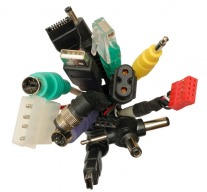A well-designed cable, built by professionals used in non-harsh conditions should last a lifetime – literally your lifetime – so why is it that we sometimes hear about cables failing? Theoretically, they should have a much longer lifespan than most of the electrical goods/ electronics which they connect.
1: Right Connector Wrong Cable
Many cable designs start with the connector, with all the focus being heaped on the type of interconnect. However, equal attention should be given to the cable being used; important questions are:
- What is the cable type? Data, Power or Both?
- What current AMPs will be put down the cable?
- Will the cable need a screen and, if so, what type?
These may seem basic things to ascertain but if you cannot fully answer these questions then you cannot say that the design fully meets the required specifications.
2: Cable Assembly last on the design list
With so much time being given to the product’s design specificity, the look of the product and the internal electronics can be way down the list of design, especially with the PCB cables. However, consider that no matter how well your product is designed, if the cable fails this will reflect on the overall quality of the product.
The solution is simple – allocate more time to the designing of the cable assemblies, looms and harnesses.
3: Wrong Environment
When thinking about where the product will be used factors such as the environment must be considered. These include temperature variables, moisture levels and how the product will be used i.e. in a warm office or spending a lot of time in transit.
With this in mind is it possible that the above environment variables have been fully considered? For example, did you know that there are IP68 rated D-Type connectors on the market at very competitive prices?
4: Lowest Possible Price
It’s a competitive world out there and the demand for lowering overall product costs can be very influential. With such a wide range of connectors and cables on the market it is easy to go for the cheapest option that ticks all the design criteria boxes. This can be a big mistake.
A good example of this is choosing a plastic body connector that seems to do the job, when a metal body connector will be much more robust.
5: One Size does not fit all
Many product ranges use common cables, and this can be a good idea as it makes manufacturing easier and lowers the overall production costs. The temptation for the design engineer is to continue to use existing cables across the range of products because they have always worked in the past. However, consider during the product developments and re-designs whether any serious attention is being given to the cables, and if they are still fit for purpose.
Sometimes it is easy to forget to check but this mistake can be costly. For example, just a little more current being sent down the cable than that for which it was previously designed can seriously lower the lifespan of the cable.
I hope this simple 5-point guide has been useful. While some of the questions may seem obvious, we can assure you that we have seen plenty examples of these common mistakes being made by very well-intentioned people.
Remember, there is a world of support out there for you so always ask your cable assembly specialist to look at the design with you, giving them full details of how and where the cables will be used.
Asking for design assistance is not admitting any weakness on your part, in fact it is the very opposite. After all any specialist in their field who is there to help you should be used, as their in-depth knowledge can give you and your products that leading edge which your company needs.

5 Reasons Cables Fail & How This Can Be Avoided
A well-designed cable, built by professionals used in non-harsh conditions should last a lifetime – literally your lifetime – so why is it that we sometimes hear about cables failing? Theoretically, they should have a much longer lifespan than most of the electrical goods/ electronics which they connect.
1: Right Connector Wrong Cable
Many cable designs start with the connector, with all the focus being heaped on the type of interconnect. However, equal attention should be given to the cable being used; important questions are:
These may seem basic things to ascertain but if you cannot fully answer these questions then you cannot say that the design fully meets the required specifications.
2: Cable Assembly last on the design list
With so much time being given to the product’s design specificity, the look of the product and the internal electronics can be way down the list of design, especially with the PCB cables. However, consider that no matter how well your product is designed, if the cable fails this will reflect on the overall quality of the product.
The solution is simple – allocate more time to the designing of the cable assemblies, looms and harnesses.
3: Wrong Environment
When thinking about where the product will be used factors such as the environment must be considered. These include temperature variables, moisture levels and how the product will be used i.e. in a warm office or spending a lot of time in transit.
With this in mind is it possible that the above environment variables have been fully considered? For example, did you know that there are IP68 rated D-Type connectors on the market at very competitive prices?
4: Lowest Possible Price
It’s a competitive world out there and the demand for lowering overall product costs can be very influential. With such a wide range of connectors and cables on the market it is easy to go for the cheapest option that ticks all the design criteria boxes. This can be a big mistake.
A good example of this is choosing a plastic body connector that seems to do the job, when a metal body connector will be much more robust.
5: One Size does not fit all
Many product ranges use common cables, and this can be a good idea as it makes manufacturing easier and lowers the overall production costs. The temptation for the design engineer is to continue to use existing cables across the range of products because they have always worked in the past. However, consider during the product developments and re-designs whether any serious attention is being given to the cables, and if they are still fit for purpose.
Sometimes it is easy to forget to check but this mistake can be costly. For example, just a little more current being sent down the cable than that for which it was previously designed can seriously lower the lifespan of the cable.
I hope this simple 5-point guide has been useful. While some of the questions may seem obvious, we can assure you that we have seen plenty examples of these common mistakes being made by very well-intentioned people.
Remember, there is a world of support out there for you so always ask your cable assembly specialist to look at the design with you, giving them full details of how and where the cables will be used.
Asking for design assistance is not admitting any weakness on your part, in fact it is the very opposite. After all any specialist in their field who is there to help you should be used, as their in-depth knowledge can give you and your products that leading edge which your company needs.
Nicab blog
Take a look at some of our other posts